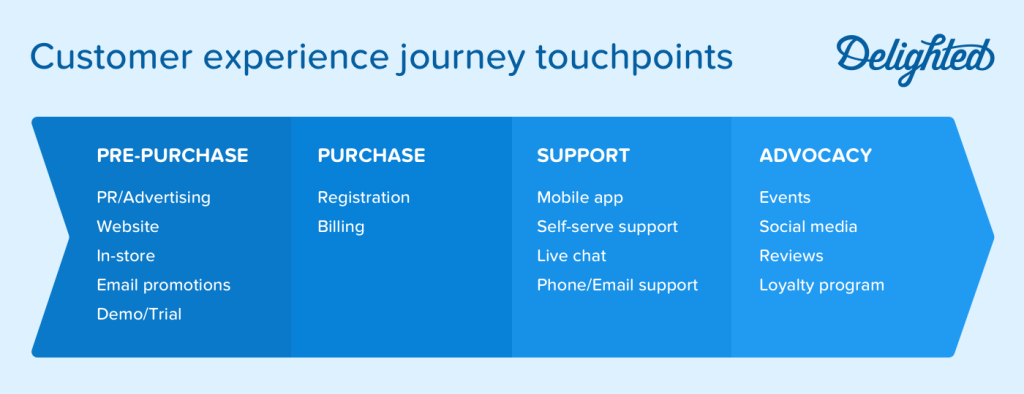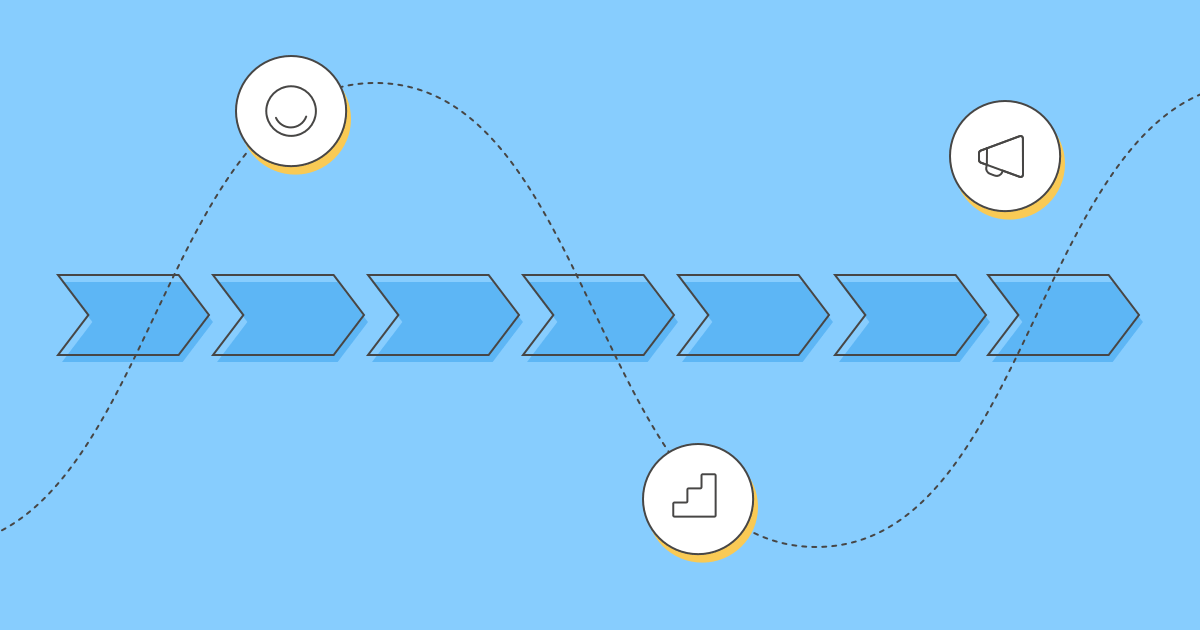The fast rise of digital channels where consumers can engage with or talk about your brand has created loads of challenges.
71% of consumers want a consistent experience across all channels, but only 29% say they actually get it.
Consumers will leave your business altogether if they aren’t getting a personalized experience across channels. 33% of consumers who ended their relationship with a company in 2018 did so because the experience wasn’t personalized enough.
But, these shifts in consumer behavior have also created a great opportunity for the brands that embrace this new digital reality and prioritize digital transformation for their organization.
56% of CEOs said digital improvements have led to revenue growth. Multi-channel customers spend 4% more in store and 10% more online than single-channel customers. For every additional channel they use, customers spend more money.
To stay ahead of the curve and reap these rewards, you must have a deliberate strategy for measuring and improving digital customer experiences.
In this post, we’ll discuss what digital customer experience (DCX) means for your specific organization, and share the steps you need to take to continually improve digital customer experiences moving forward.
What is digital customer experience?
Digital customer experience encompasses all the interactions a customer has with your brand through online channels. Examples of these platforms include social media channels, live chat and email, your website, mobile apps, and more. Customers’ overall perception of your brand based on these virtual touchpoints makes up the digital experience.
Digital customer experience management isn’t simply managing specific digital channels and ensuring they work well. It also isn’t an effort only marketing or sales should focus on. Customers expect seamless access and personalized interactions from you, throughout the entire customer journey – whether that be on digital or non-digital channels.
Successful digital customer experience requires being aware of the digital touchpoints you share with your customers across platforms and continually improving the experience your customers have within and between those touchpoints.
How (and why) to map your digital customer experience journey
To improve the digital experiences that your customers have with your brand, you need to first understand what those digital experiences are.
Digital customer journey mapping can help with this.
In the diagram below, you can see the stages customers go through from first discovering your brand all the way to their first point of purchase and your relationship with them moving forward.

Along their journey, customers will experience and engage your brand at multiple touchpoints. It is important that you determine what these touchpoints are for your unique business.
Each touchpoint provides an opportunity to either create a positive experience that increases brand loyalty, or a negative one that loses customers.
It’s your job to ensure more of the former. How you ask? By measuring how people experience these touchpoints and by taking action to improve them.
How to improve digital customer experiences
The process of measuring and improving digital customer experiences is straightforward: gather data on each experience, find insights in the data on how to improve, and then take action on those insights.
1. Gather intelligence on digital customer experiences
Seeing as there are multiple channels and touchpoints where interactions happen, there are multiple methods for gathering intelligence on each interaction.
Social media monitoring and management tools can help you monitor social media channels and respond to brand mentions. Customer Relationship Management (CRM), live chat, and customer support platforms help your sales and support teams directly communicate with customers and keep track of direct engagements. Customer analytics allows you to track and report on how customers actually use your service.
But, there is only one method that helps you gather direct customer feedback and quantitative data across digital touchpoints: customer experience surveying.
Using the right customer experience survey software, surveys can be triggered or sent after any digital customer interaction and can be delivered to customers via multiple digital channels.
Here are a few digital CX survey example scenarios:
- Send a Customer Satisfaction (CSAT) survey by email after a completed customer support ticket to gauge how satisfied the customer is with your customer service rep’s response using our customer satisfaction software.
- Share a visual rating survey (5-star survey, Smiley face survey, Thumbs survey) via a link in a live chat conversation or in reply to a comment on social media to learn how to improve interactions.
- Trigger a Customer Effort Score (CES) survey right within your product interface after a customer uses a specific product feature to determine how easy or difficult it was to use, according to the customer.
- Send a Net Promoter Score (NPS) survey to customers after they used both your Internet-of-Things (IoT) hardware device and your mobile app to see how happy the customer is with your product and how willing they are to recommend it to others using Delighted’s NPS tool.
Customer experience surveys collect ratings on the experience that can be calculated into CX scores to benchmark and improve upon over time. But, customers are also asked a follow up question (or multiple) where they can provide written feedback on their experience as well. By asking customers how they are experiencing your service, you gain context from their words that numbers can rarely convey on their own.
This combo of quantitative data (CX scores) and qualitative data (words directly from customers) provide valuable context for uncovering insights you can act on.
2. Uncover digital customer experience insights
With sufficient, contextual intelligence on how customers are experiencing your digital customer experience touchpoints, it’s time to find actionable insights to improve those experiences.
You don’t have to be a data scientist to do this. You just need the right process and tools.
Here is a straightforward process for uncovering digital customer experience insights you can act on:
- Read incoming feedback! With the right customer experience management software, feedback arrives in real-time. So, it is best to read feedback as it happens so that any time-sensitive issues can be addressed quickly.
- Categorize feedback based on keywords such as the location or product mentioned, “customer service,” specific features, etc.
- Sort feedback within your keyword categories into positive and negative sentiment.
- Take note of trends based on the keywords you are filtering by, your sentiment sorting, and the customer experience scores for each of these segments.
- Compare feedback and CX scores across your segments (filters, sorting, etc,) and with other data you have collected on the surveyed customers, such as notes in your CRM, past support conversations, and the actions each surveyed customer has taken via your customer analytics tracking.
The above process helps you add context to your customer feedback and CX score data for your various digital customer touchpoints. Context that will help you prioritize what needs to be improved first and how to go about it.
Now, you could do all of that manually, but it is much easier with the right customer experience survey platform and the other tools used for customer data collection and reporting mentioned in step 1.
3. Take action to improve digital customer experiences
Now that you uncovered insights for improving your digital customer experiences, it’s time to get work!
First of all, there are likely customers that have provided feedback and are eagerly awaiting resolution. More than half of consumers expect a response from customer service within an hour, even on weekends.
Beyond resolving immediate issues, you should aim to close the loop with your other customer segments.
- Follow up with passive customers
Your digital customer experience data and feedback collection will uncover customers that are neither extremely happy nor unhappy with you. This is often a large segment that provides great opportunity for improvement through proactive engagement. Reach out to get to know what will turn them into a promoter that raves about your service to others. - Turn happy customers into advocates
Customers that provide positive feedback shouldn’t be taken for granted. Give these customers an easy path to promote your service to others. Show them how they can gain additional value from you that could increase the amount of money they spend with your business. - Learn from unhappy customers
Negative feedback or complaints shared by customers online can feel personal, but it is important to consider unhappy customers as opportunities to gain constructive insights for improvement. You may also be surprised how quickly vocal unhappy customers can turn into vocal brand advocates with tactful engagement.
To enable proactive customer engagement and quick follow up, your digital customer experience data and insights need to be in the right hands at the right time. Do this by using tools that connect well with each other for a seamless flow of information.
Insights readily available across your teams also make it easier to inform larger efforts, such as new product development, business strategy, and operations policy.
Conclusion
We live in a new digital age where consumers expect quick responses to their issues with your business and proactive improvement to their experiences – across a multitude of digital channels.
With the process described in this post and the right customer experience platform, you can have an effective digital customer experience strategy up and running in no time.
Delighted makes it incredibly easy to execute the digital customer experience strategy detailed in this post with our survey templates. From sending surveys and collecting feedback, to benchmarking data over time to enable continuous improvement across your digital customer journey.







